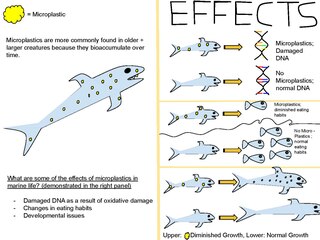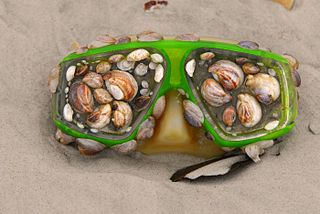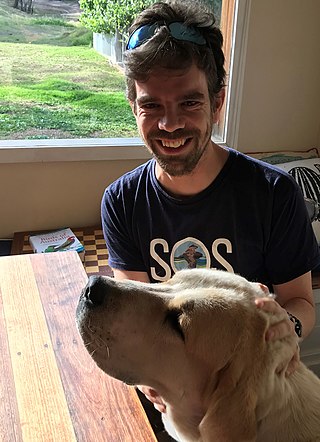
The coast, also known as the coastline, shoreline or seashore, is defined as the area where land meets the ocean, or as a line that forms the boundary between the land and the coastline. Shores are influenced by the topography of the surrounding landscape, as well as by water induced erosion, such as waves. The geological composition of rock and soil dictates the type of shore which is created. The Earth has around 620,000 kilometres (390,000 mi) of coastline. Coasts are important zones in natural ecosystems, often home to a wide range of biodiversity. On land, they harbor important ecosystems such as freshwater or estuarine wetlands, which are important for bird populations and other terrestrial animals. In wave-protected areas they harbor saltmarshes, mangroves or seagrasses, all of which can provide nursery habitat for finfish, shellfish, and other aquatic species. Rocky shores are usually found along exposed coasts and provide habitat for a wide range of sessile animals and various kinds of seaweeds. In physical oceanography, a shore is the wider fringe that is geologically modified by the action of the body of water past and present, while the beach is at the edge of the shore, representing the intertidal zone where there is one. Along tropical coasts with clear, nutrient-poor water, coral reefs can often be found between depths of 1–50 meters.

Brine is water with a high-concentration solution of salt. In diverse contexts, brine may refer to the salt solutions ranging from about 3.5% up to about 26%. Brine forms naturally due to evaporation of ground saline water but it is also generated in the mining of sodium chloride. Brine is used for food processing and cooking, for de-icing of roads and other structures, and in a number of technological processes. It is also a by-product of many industrial processes, such as desalination, so it requires wastewater treatment for proper disposal or further utilization.

Marine debris, also known as marine litter, is human-created solid material that has deliberately or accidentally been released in a sea or ocean. Floating oceanic debris tends to accumulate at the center of gyres and on coastlines, frequently washing aground, when it is known as beach litter or tidewrack. Deliberate disposal of wastes at sea is called ocean dumping. Naturally occurring debris, such as driftwood and drift seeds, are also present. With the increasing use of plastic, human influence has become an issue as many types of (petrochemical) plastics do not biodegrade quickly, as would natural or organic materials. The largest single type of plastic pollution (~10%) and majority of large plastic in the oceans is discarded and lost nets from the fishing industry. Waterborne plastic poses a serious threat to fish, seabirds, marine reptiles, and marine mammals, as well as to boats and coasts.

Marine pollution occurs when substances used or spread by humans, such as industrial, agricultural and residential waste, particles, noise, excess carbon dioxide or invasive organisms enter the ocean and cause harmful effects there. The majority of this waste (80%) comes from land-based activity, although marine transportation significantly contributes as well. It is a combination of chemicals and trash, most of which comes from land sources and is washed or blown into the ocean. This pollution results in damage to the environment, to the health of all organisms, and to economic structures worldwide. Since most inputs come from land, either via the rivers, sewage or the atmosphere, it means that continental shelves are more vulnerable to pollution. Air pollution is also a contributing factor by carrying off iron, carbonic acid, nitrogen, silicon, sulfur, pesticides or dust particles into the ocean. The pollution often comes from nonpoint sources such as agricultural runoff, wind-blown debris, and dust. These nonpoint sources are largely due to runoff that enters the ocean through rivers, but wind-blown debris and dust can also play a role, as these pollutants can settle into waterways and oceans. Pathways of pollution include direct discharge, land runoff, ship pollution, bilge pollution, atmospheric pollution and, potentially, deep sea mining.

Ghost nets are fishing nets that have been abandoned, lost, or otherwise discarded in the ocean, lakes, and rivers. These nets, often nearly invisible in the dim light, can be left tangled on a rocky reef or drifting in the open sea. They can entangle fish, dolphins, sea turtles, sharks, dugongs, crocodiles, seabirds, crabs, and other creatures, including the occasional human diver. Acting as designed, the nets restrict movement, causing starvation, laceration and infection, and suffocation in those that need to return to the surface to breathe. It's estimated that around 48 million tons of lost fishing gear is generated each year, not including those that were abandoned or discarded and these may linger in the oceans for a considerable time before breaking-up.

The Great Pacific garbage patch is a garbage patch, a gyre of marine debris particles, in the central North Pacific Ocean. It is located roughly from 135°W to 155°W and 35°N to 42°N. The collection of plastic and floating trash originates from the Pacific Rim, including countries in Asia, North America, and South America.

Plastic pellet pollution is a type of marine debris originating from the plastic particles that are universally used to manufacture large-scale plastics. In the context of plastic pollution, these pre-production plastic pellets are commonly known as 'nurdles'. These microplastics are created separately from the user plastics they are melted down to form, and pellet loss can occur during both the manufacturing and transport stages. When released into the open environment, they create persistent pollution both in the oceans and on beaches. About 230,000 tonnes of nurdles are thought to be deposited in the oceans each year, where they are often mistaken for food by seabirds, fish and other wildlife. Due to their small size, they are notoriously difficult to clear up from beaches and elsewhere.

A garbage patch is a gyre of marine debris particles caused by the effects of ocean currents and increasing plastic pollution by human populations. These human-caused collections of plastic and other debris are responsible for ecosystem and environmental problems that affect marine life, contaminate oceans with toxic chemicals, and contribute to greenhouse gas emissions. Once waterborne, marine debris becomes mobile. Flotsam can be blown by the wind, or follow the flow of ocean currents, often ending up in the middle of oceanic gyres where currents are weakest.

Marine plastic pollution is a type of marine pollution by plastics, ranging in size from large original material such as bottles and bags, down to microplastics formed from the fragmentation of plastic material. Marine debris is mainly discarded human rubbish which floats on, or is suspended in the ocean. Eighty percent of marine debris is plastic. Microplastics and nanoplastics result from the breakdown or photodegradation of plastic waste in surface waters, rivers or oceans. Recently, scientists have uncovered nanoplastics in heavy snow, more specifically about 3,000 tons that cover Switzerland yearly.

Microplastics are fragments of any type of plastic less than 5 mm (0.20 in) in length, according to the U.S. National Oceanic and Atmospheric Administration (NOAA) and the European Chemicals Agency. They cause pollution by entering natural ecosystems from a variety of sources, including cosmetics, clothing, food packaging, and industrial processes.

The Indian Ocean garbage patch, discovered in 2010, is a marine garbage patch, a gyre of marine litter, suspended in the upper water column of the central Indian Ocean, specifically the Indian Ocean Gyre, one of the five major oceanic gyres. The patch does not appear as a continuous debris field. As with other patches in each of the five oceanic gyres, the plastics in it break down to ever smaller particles, and to constituent polymers. As with the other patches, the field constitutes an elevated level of pelagic plastics, chemical sludge, and other debris; primarily particles that are invisible to the naked eye. The concentration of particle debris has been estimated to be approximately 10,000 particles per square kilometer.

The majority of environmental issues affecting Hawaii today are related to pressures from increasing human and animal population and urban expansion both directly on the islands as well as overseas. These include the unsustainable impacts of tourism, urbanization, implications of climate change such as sea level rise, pollution, especially marine plastic pollution, and invasive species.

Plastic pollution is the accumulation of plastic objects and particles in the Earth's environment that adversely affects humans, wildlife and their habitat. Plastics that act as pollutants are categorized by size into micro-, meso-, or macro debris. Plastics are inexpensive and durable, making them very adaptable for different uses; as a result, manufacturers choose to use plastic over other materials. However, the chemical structure of most plastics renders them resistant to many natural processes of degradation and as a result they are slow to degrade. Together, these two factors allow large volumes of plastic to enter the environment as mismanaged waste which persists in the ecosystem and travels throughout food webs.

The plastisphere consists of ecosystems that have evolved to live in human-made plastic environments. All plastic accumulated in marine ecosystems serves as a habitat for various types of microorganisms, with the most notable contaminant being microplastics. There are an estimate of about 51 trillion microplastics floating in the oceans. Relating to the plastisphere, over 1,000 different species of microbes are able to inhabit just one of these 5mm pieces of plastic.
The Shaw Institute, formerly the Marine & Environmental Research Institute, is a 501(c)(3) nonprofit scientific research organization based in Blue Hill, Maine and New York City. The institute conducts research into ocean pollution, flame retardants, microplastics and plastic pollution, sentinel species and climate change.

UV-328 is a chemical compound that belongs to the phenolic benzotriazoles. It is a UV filter that is used as an antioxidant for plastics.

Alexander L. Bond is a Canadian conservation biologist, ecologist, and curator. He is Principle Curator and Curator in Charge of Birds at the Natural History Museum at Tring. Dr. Bond is a key member of the marine plastics pollution research group Adrift Lab. He is also the Ornithologist in Residence at St Nicholas Church, Leicester, a noted LGBTQ+-inclusive church.

Plasticrusts are a new type of plastic pollution in the form of plastic debris, covering rocks in intertidal shorelines which vary in thickness and in color and are composed of polyethylene based on fourier-transform infrared spectroscopy (FTIR) analysis. They were first discovered on the South coast of the volcanic island of Madeira in the Atlantic Ocean in 2016 and have additionally been found on Giglio Island, Italy. They are considered a sub-type of plastiglomerate and could possibly have negative effects on surrounding fauna by entering the food web through consumption by benthic invertebrates.

The Mediterranean Sea has been defined as one of the seas most affected by marine plastic pollution.
Plastistone is the umbrella term for rocks that have fused with plastic. At the end of 2023 there were numerous sightings of green-colored plastic seemingly melted to rocks. It forms from plastic that floats through the ocean and melts to the rocks over time. So far, the stone has appeared on 5 continents. It was recently spotted in March 2023 on the Brazilian remote island of Trindade by geologist Fernanda Avelar Santos and has been seen in Hawaii a decade before.



































